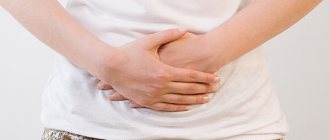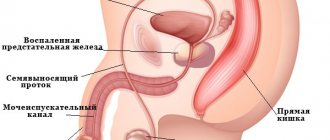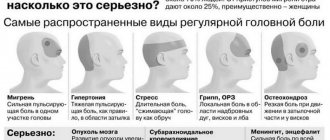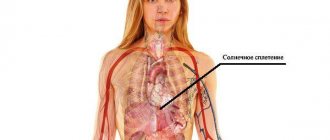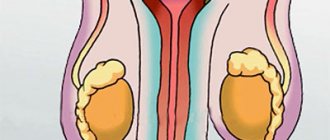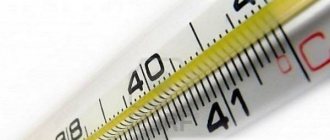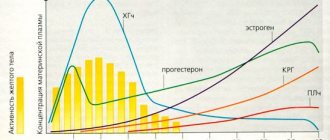Stomach pain may indicate temporary organ dysfunction or the development of a serious pathology. Therefore, the first thing to do if you experience recurring types of pain is to consult a doctor. The specialist, based on the results of the examination, tests and diagnostics, will find out the cause of the discomfort and, if necessary, prescribe a course of therapy. Self-medication for abdominal pain of unknown etiology is unacceptable.
Upper abdomen as an anatomical region
In anatomy, the part of the abdomen bounded at the top by the sternum, the costal arches on the sides and the line connecting the lower ribs from below is called the epigastrium. The following organs are projected onto the upper abdomen:
- right hepatic lobe;
- transition of the ascending colon to the transverse colon;
- gallbladder;
- left hepatic lobe;
- stomach;
- abdominal part of the esophagus;
- pancreas;
- fundus of the stomach;
- duodenum;
- tail of the pancreas;
- transition of the transverse colon into the descending colon.
Topography of the abdominal organs
Oncology as a cause
Sometimes aching pain in the upper middle of the abdomen signals cancer. Among other reasons, this particular one is relatively rare, but almost always the patient is referred for specialized tests in order to exclude such a development of events. Cancer is one of the most terrible diagnoses.
If there is a suspicion of cancer, it is necessary to undergo all tests as quickly as possible to make the most accurate diagnosis and begin treatment, following the program developed by the doctor. Malignant formations can metastasize to unpredictable, distant parts of the body. Without proper and timely treatment, the likelihood of death increases significantly.
Many rightly believe that cancer is the worst explanation for pain in the stomach. Recently, malignant neoplasms in the gastrointestinal tract have become more common; some classify this system as one of the three most common variants of localization of atypical cells. Around the world, the number of cancer victims is growing every year.
Esophageal cancer, among other malignant pathologies of the gastrointestinal tract, is relatively rare. The risks are higher if a person eats incorrectly. The more red, fried, fatty meat is consumed, the greater the danger. The danger of a malignant process and the frequency and volume of alcohol consumed by a person correlate.
It has been suggested that the likelihood of developing esophageal cancer may be associated with carcinogenic food additives, but at present there are no reliable studies on this issue. Coloring, aromatic substances, and preservatives are found in almost any food that is on store shelves.
Diseases that accompany epigastric pain
From the liver and gallbladder:
- hepatitis;
- cholecystitis.
From the intestines:
- colitis;
- flatulence - increased gas formation.
From the small intestine:
- inflammation of the mucous membrane;
- duodenal ulcer.
From the stomach:
- gastritis;
- peptic ulcer;
- food poisoning;
From the pancreas:
- pancreatitis.
From the diaphragm side:
- hiatal hernia.
From the esophagus:
- esophagitis.
Emergency conditions that are accompanied by epigastric pain:
- hepatic colic;
- acute appendicitis;
- perforation of a stomach ulcer;
- peritonitis;
- gastralgic form of myocardial infarction;
- pancreatic necrosis.
Causes of abdominal distension in healthy people
Distension inside the abdomen appears in both sick and healthy people. Gas formation can occur not only as a symptom of a certain illness, but also for other reasons. A feeling of bloating in healthy people may occur when:
- Abuse of carbonated drinks.
- Excessive swallowing of air while eating.
- Taking soda, which neutralizes the acidic environment of the stomach and causes increased gas formation.
- Abuse of sweets and baked goods.
- Excess fiber and starch in the body. Most often, gas formation occurs when eating large quantities of potatoes, legumes and rye bread.
In most cases, bloating appears after holidays accompanied by a large meal. It lasts no more than two days and often goes away on its own, but still causes discomfort.
Pathologists of the liver and gallbladder
Acute hepatitis
With inflammation of the liver parenchyma, the patient experiences mild or moderate pain on the right side. An increase in the size of the liver is determined by palpation and percussion. The hepatic edge is painful and dense. Hepatitis is accompanied by yellowing of the skin and mucous membranes.
Diagnosis is carried out using sonography and laboratory blood tests for transamins and alkaline phosphatase.
Acute cholecystitis
Appears as a result of poor diet. Pain syndrome is accompanied by the following symptoms:
- medium and high pain intensity;
- localization - right hypochondrium, but the attack begins in the epigastric region;
- nausea, vomiting;
- increase in body temperature to 38 degrees.
In acute cholecystitis, the following symptoms are positive:
- Kera - pain when pressing in the projection of the gallbladder;
- Ortner - pain when tapping on the right costal arch.
The diagnosis is made based on the clinical picture, ultrasound and laboratory diagnostics.
Hepatic colic
This is an emergency condition that develops due to a violation of the outflow of bile from the gallbladder and hepatic ducts. A common cause is the release of a stone into the lumen of the duct and its blockage. The pain with hepatic colic is intense, paroxysmal. Localization in the right hypochondrium. The attack is caused by a violation of the diet against the background of cholelithiasis.
Important! Hepatic colic, if not stopped promptly, is complicated by obstructive jaundice.
Liver diseases, which may cause pain in the upper abdomen
The liver is located in the upper right part of the peritoneum. It performs a number of important functions - the removal of toxic substances, the formation of bile and proteins, the accumulation of glycogen, etc. Liver diseases develop for various reasons and can manifest themselves in different ways.
Unpleasant sensations are often associated with the enlargement of the organ, because its internal surface is devoid of nerve endings, and the destruction of the liver parenchyma is painless. However, the tissue that surrounds the organ is quite sensitive, so with moderate enlargement of the organ, the pain is insignificant - in the form of discomfort in the right hypochondrium. Its intensification is observed during bending, sharp turns, and physical activity.
Severe enlargement of the liver can lead to severe pain. Another reason why the liver hurts is a purulent accumulation (abscess) affecting the outer capsule.
Intestinal diseases
Colitis
Inflammatory processes in the transverse colon and in the places of its transition to other parts are accompanied by pain in the upper abdomen.
Acute colitis occurs with excruciating, paroxysmal pain, increasing in intensity. Chronic intestinal pathology is characterized by constant mild pain. Depending on the cause of colitis, pain will be accompanied by the following symptoms:
- With infectious colitis - nausea, diarrhea, green or yellow stool, rumbling, increased body temperature;
- Nonspecific ulcerative colitis and Crohn's disease - diarrhea from 5 to 20 times a day, bowel movements with mucus and blood;
- Helminthic colitis - constipation or diarrhea, flatulence, low-grade fever, weight loss, allergies, itching in the perianal area;
- Dysbacteriosis due to taking antibiotics - diarrhea, flatulence, spastic pain, fatigue, decreased performance.
Diagnosis of colitis is based on instrumental methods - irrigoscopy, colonoscopy.
Duodenitis
Inflammation of the mucous membrane of the small intestine can be divided according to etiology into several groups:
- Duodenitis associated with gastritis is manifested by intense sucking pain in the upper abdomen on an empty stomach. After eating, the pain returns a few hours later. Nighttime hunger pain is also typical.
- Duodenitis with the spread of the process to the entire small intestine is characterized by dyspeptic symptoms and pain of moderate intensity.
The disease is accompanied by spasm of the biliary and pancreatic ducts.
The patient may develop attacks of cholecystito-pancreatitis. Low-intensity, aching pain in the upper abdomen is characteristic of a chronic process in the duodenum in remission.
The correct diagnosis is made on the basis of fibrogastroduodenal examination data.
Ulcer of the duodenum
A defect in the intestinal mucosa is often associated with Helicobacter pylori infection. The pain increases in intensity and begins 2 hours after eating and on an empty stomach. Pain in the middle of the night of high intensity, goes away after drinking a glass of milk or any food. In addition to pain, patients complain of dyspepsia. Against the background of the existence of an ulcer, attacks of pancreatitis and cholecystitis often develop.
Damage to the mucosa can be detected using FGDS with pH measurement and collection of duodenal juice.
Diagnosis and treatment
Determining the cause of pain begins with a palpation examination of the abdomen to detect inflammation or swelling. The procedure is done by lightly pressing on various parts of the abdomen. To obtain the full amount of information, it is required that the patient correctly describe the intensity and nature of the pain, its distribution within the abdominal region. Afterwards, the attending physician prescribes the necessary additional examination. Moreover, a single procedure or a whole set of tests is permissible to exclude or confirm the presence of fractures, growths, swelling or ruptures.
Examinations required for diagnosis:
- Ultrasound – diagnoses a specific organ in the abdominal region.
- X-ray of the spine.
- Colonoscopy - examination is carried out in the inside of the colon and intestines.
- Endoscopy – search for abnormal formations and tumors in specific areas of the stomach or esophagus.
- General blood, urine, and stool tests for the presence of viruses, bacterial infections and parasites.
- Examination of the gastrointestinal tract using x-rays over the stomach for the presence of disorders such as ulcers, inflammation, neoplasms, etc.
- MRI.
https://youtu.be/kBNo6GhvPiI
https://youtu.be/w7KcE3NOFQ8
Stomach diseases
Gastritis
A common pathology among the young population. Improper nutrition leads to inflammation of the gastric mucosa and the appearance of epigastric pain. The symptoms are as follows:
- pain in the upper abdomen several hours after eating;
- lying down the pain subsides, standing and sitting increases;
- eating is accompanied by a feeling of heaviness, belching and heartburn;
- bad breath on an empty stomach;
- increased gas formation in the intestines;
- distension in the upper abdomen.
Diagnosis is based on visualization of mucosal damage using gastroscopy.
Stomach ulcer
In most cases, Helicobacter pylori infection is involved in the formation of ulcers. Pain during peptic ulcer disease has different localization depending on the location of the defect formation.
Pain in the upper abdomen under the xiphoid process is characteristic of an ulcer of the body of the stomach. When a bolus of food enters the stomach, it irritates the receptors and stimulates a pain attack. If the ulcer is located in the cardiac region and on the back wall of the stomach, then symptoms appear immediately after eating. With an ulcer located closer to the pylorus, pain develops several hours after eating and on an empty stomach. The larger the volume of food that enters the stomach, the more intense the pain.
Diagnosis of ulcers - gastroscopy
Important! A serious complication of an ulcer is perforation of the stomach wall at the site of the defect. The process leads to the release of gastric contents into the abdominal cavity. A characteristic sign of ulcer perforation is dagger pain in the upper abdomen. If assistance is not provided in a timely manner, diffuse inflammation of the peritoneum develops.
Causes and consequences
In addition to poor nutrition, ulcer perforation can be caused by infectious diseases. Pathological microflora, resistant to conditions of high acidity, can begin to actively develop in the stomach and intestinal tract if the patient’s immunity weakens or the patient takes certain medications.
A decrease in the body's ability to protect itself from aggressive factors is associated with bad habits. Among people seeking help and treatment for stomach ulcers, adults with symptoms of such a disease (the first of which is sharp pain) are most likely to smoke and drink alcohol. Stressful life situations may play a role.
In order to determine in time what caused it, how to deal with the consequences, and cure the disease, you should visit a therapist. The doctor will listen to the patient and give directions for tests and instrumental studies. Even if an ulcer is suspected, it is necessary to take additional measures to exclude other life-threatening pathologies with similar manifestations.
Peritonitis
Never develops as a primary disease. Inflammation of the peritoneum is always a complication of pathology of the abdominal cavity or pelvis. In the initial stage, the pain is local in nature at the source of inflammation.
Causes of development of peritonitis of the upper abdominal cavity:
- rupture of a gallbladder filled with stones;
- intestinal perforation;
- pancreatic necrosis;
- perforation of a gastric or duodenal ulcer.
Important! The course of peritonitis is rapid; a few hours after its development, the terminal stage is formed, the patient’s condition becomes extremely severe.
Pain in the third trimester
If at 36 weeks of pregnancy the abdomen hurts at the top, this may be a sign of premature birth or placental abruption. In addition, such pain may indicate acute surgical pathology and digestive disorders.
If at 36 weeks of pregnancy the upper abdomen hurts, this is mainly due to the activity of the fetus itself. An almost fully developed child moves his legs and arms, pushes off, causing some discomfort to the woman. However, in general, symptoms occur only when the baby moves.
If at 38 weeks of pregnancy there is pain in the upper abdomen, you should definitely consult a doctor, as this may be associated with fetal fading. In addition, this may be a completely natural process, since during this period the pregnancy is full-term. The body begins to gradually prepare for childbirth. Such changes are almost always accompanied by painful manifestations.
If at 39 weeks of pregnancy there is very sharp pain in the upper abdomen, you should urgently visit a gynecologist or call an ambulance, as this may be a sign of the onset of labor.
Pathologies of the pancreas
Pancreatitis
Inflammation of the pancreatic parenchyma develops after a dietary error. After eating fried, fatty or spicy foods, aching pain appears in the upper abdomen. The intensity increases, the pain goes from localized to diffuse, encircling. It is typical for an attack of acute pancreatitis that a person rushes about on the bed, unable to find a position to relieve suffering. The symptom is most pronounced when lying on your back.
Chronic pancreatitis is also accompanied by pain, but of much less intensity. Patients are more concerned about abdominal discomfort and indigestion.
Diagnosis is based on the clinical picture and ultrasound scanning.
Pancreatic necrosis
An emergency condition for pancreatic pathology is pancreatic necrosis. In this case, the parenchyma of the gland is destroyed under the action of its own enzymes. The pain is localized in the upper abdomen. It is sharp in nature, encircling, and extends to the left half of the body. Associated symptoms:
- repeated vomiting;
- temperature increase;
- diarrhea;
- blue-violet spots on the left abdomen, lumbar region.
The reason is the heart
If there is pain in the upper abdomen under the ribs in the middle, the symptom may indicate a heart attack. The term refers to a pathological process in which a section of the heart muscle ceases to receive the oxygen and nutritional components necessary for functioning, which leads to death. If the cause of abdominal pain is a heart attack, additional symptoms are possible that simplify the identification of the condition.
A heart attack often occurs against the background of overstrain, both physical and emotional, nervous. If examination of the patient suggests a heart attack, the victim must be hospitalized immediately. The pathological condition is fraught with severe complications, fatal consequences, even death.
Gynecological ailments
Pain in the lower abdominal cavity in women is the first sign of diseases of the genital organs.
There are many pathologies that have similar symptoms: polycystic ovary syndrome, cervical erosion, inflammation of the appendages, endometrial polyps and other gynecological ailments.
Ectopic pregnancy
Sometimes a woman experiences sharp, severe, stabbing pain in the lower abdomen. They develop when a fertilized egg implants in the ovary, fallopian tube, or abdominal cavity. This pathology is dangerous because the oviducts may rupture.
In this situation, the pain is acute, constant and simply unbearable. They are felt not only in the vagina, but also in the rectum, in the supraclavicular region and lower back. With such an attack, bloody discharge appears and internal hemorrhage (bleeding) begins.
An ectopic pregnancy poses a serious threat to a woman’s life and requires emergency surgery. You can't hesitate.
Inflammation of the appendages and uterus
With this type of pathology, the patient is bothered by stabbing, cramping pain in the lower abdomen. Additional symptoms of the disease include: itching, burning, purulent discharge, constant discomfort in the genitals. The first unpleasant sensations appear at the initial stage of the disease, before it becomes chronic.
The nature of inflammation of the appendages or uterus is extensive. Common reasons include:
- urogenital infections;
- abortions;
- chronic diseases of the pelvic organs;
- C-section;
- decreased immunity;
- endocrine disorders.
Cyst and polycystic ovary syndrome
Cysts that form on the reproductive organs also cause stabbing pain in the abdominal cavity. The pathology is dangerous because it is asymptomatic for a long time.
In such cases, the patient is occasionally bothered by mild aching pain in the lower abdomen. The reasons for the growth of cysts in the female body are: pregnancy, hormonal imbalance, menopause, inflammatory processes.
Polycystic ovary syndrome is characterized by an increase in the size of the paired gland as a result of multiple cystic formations. The patient has a tingling sensation in the lower abdomen and pubis, and is bothered by frequent urination and pain during urine output. If the pathology is not treated, it will lead to infertility and cancer.
Ovarian apoplexy
With this disease, the muscle tissue of the ovary, usually located on the right side of the abdomen, ruptures.
The first symptom of the disease is severe stabbing pain in the lower part of the abdominal cavity moving to the anterior wall. The unpleasant syndrome has a dagger-shaped, cutting character. With apoplexy, heavy bleeding is observed, which is uncharacteristic of menstruation.
This condition can be caused by: rupture of the cyst, increased physical activity, too violent sexual intercourse, some inflammatory diseases of the ovaries, unsuccessfully selected hormonal therapy.
Cervical erosion
An ulcer in the vaginal area of the uterus causes stabbing pain in the lower abdomen on the left side. This symptom is accompanied by: cycle disruption, nausea, spotting brown or mucous discharge, constant weakness.
The causes of the disease may be:
- early and promiscuous sexual intercourse;
- disturbances in the functioning of the endocrine system;
- hormonal disbalance;
- weak immunity;
- inflammatory processes.
Polyps
An endometrial polyp is a benign formation located on the inner lining of the uterus.
Symptoms of the disease are mild at the initial stage of development. Therefore, a woman learns about the disorder only when frequent stabbing pain appears in the lower abdomen.
Myoma
Myoma (tumor) of the uterus is accompanied by nagging, intermittent pain in the pelvic area. If this benign formation reaches a large size, then it begins to compress nearby organs. The patient experiences cutting, stabbing and dull pain.
When bleeding develops, doctors perform surgery.
Pain syndrome during menstruation
Almost every woman experiences stabbing pain in the lower abdomen once a month. Discomfortable symptoms occur both before the start of the cycle and during menstruation. In the first case, pain is associated with the normalization of hormonal levels, the development and growth of the genital organs in young girls. The most serious causes of abdominal tingling before menstruation include: endometriosis, uterine flexion, polyps, inflammatory processes and chronic diseases of the pelvic organs.
Often during menstruation, a woman is tormented by cramping stabbing pains that radiate to the pubis, back, lower back, left and right side. Sometimes they are so strong that they interfere with living fully. In addition, girls experience irritability, dizziness and fatigue, constipation or diarrhea, and frequent urination. In such situations, only a gynecologist will be able to determine the cause of the ailment.
Discomfort sometimes appears after menstruation. It occurs due to endometriosis of the uterus, as blood circulation in the organ increases. The endometrial tissue grows and the ovaries begin to hurt.
The woman should undergo a special examination and determine the true cause of the syndrome.
Pain during ovulation
Tingling in the abdomen in the middle of the cycle is not considered a dangerous condition for the female body. Typically, such sensations develop during ovulation and do not cause severe discomfort. Sometimes minor discharge may appear.
Pain is felt on the sides of the abdominal cavity in the ovaries, where the eggs mature.
Painful sensations after PA
Some women experience discomfort in the abdomen after sexual intercourse. There are many reasons for this:
- vaginal dryness;
- frustration (moral dissatisfaction);
- adhesive disease of the pelvic organs;
- advanced cervicitis;
- infection;
- trauma or damage to the vagina that occurs during sex.
Esophagitis
Inflammation of the lower part of the esophagus due to the release of hydrochloric acid from the stomach is called gastroesophageal reflux disease. The condition is closely related to gastric ulcers and the persistence of Helicobacter. Pain as food passes through the esophagus spreads from the retrosternal location to the upper abdomen. The patient complains of burning heartburn after eating.
Pain in the upper abdomen is the most common problem of the gastrointestinal tract, for example, stomach spasms and gallbladder dysfunction.
When your stomach hurts in any area, you should not massage it, because this can cause bleeding. For example, pain in the upper abdomen can be caused by banal overeating. Food can contain a lot of fat, which increases the process of gas formation. The body may also not accept lactose, which is found in dairy products.
Of course, all of these reasons can cause temporary pain, which usually goes away after a few hours. In addition, pain in the upper abdomen causes more serious diseases of various vital organs that are located in this area. And it is quite difficult to determine what exactly hurts, because pain can migrate. Pain from organs that are located outside the abdominal cavity can also radiate to the abdominal area, for example, if it is pneumonia.
Prognosis after therapy
Pain in the late stages of pregnancy causes a lot of concern to a pregnant woman. This condition needs to be treated very carefully, but there is no need to panic. Pain and the occurrence of contractions prepare the body for delivery. The reason for contacting a gynecologist may be cramping, constantly increasing pain with spotting or bloody discharge.
Pain caused by constipation and various types of intestinal problems arise very often due to the fault of the woman herself, who constantly overeats. In the last months of pregnancy, you need to be very careful when choosing food, which should be natural and fresh. You need to eat often and in small portions. To naturally relax the body, you need to use a decoction of prunes or dried apricots.
A pregnant woman needs to rest as much as possible, and in a position with her legs raised up. The prognosis for pain in late pregnancy due to pathology of internal organs can be disappointing. Acute and chronic processes often require surgery. However, it is worth considering that all doctors’ actions should be aimed at preserving the life of the child and mother.
Causes of stabbing pain in men
In representatives of the stronger sex, the lower abdomen can pull and cut due to urological problems.
The most common diseases of the genitourinary system include: prostatitis, vesiculitis and varicocele.
Prostatitis
Acute inflammation of the prostate gland is characterized by pronounced symptoms:
- pain when trying to empty the bladder;
- increased basal temperature;
- stabbing pain in the lower abdomen;
- frequent urge to go to the toilet, especially at night;
- soreness in the scrotum and groin area.
Prostatitis in most cases has a chronic course.
Clinical signs and symptoms at the initial stage of the disease are vague. Basically, the disease is diagnosed during its exacerbation.
Vesiculitis and varicocele
Vesiculitis is an infectious inflammation of the seminal vesicles in men. It often manifests itself as pain in the lower abdomen. Spasms have a different character, depending on the course of the disease. In acute vesiculitis, the patient is bothered by severe pain in the groin area. Discomfort occurs during urination and erection. The chronic form is characterized by nagging and aching pain in the lower abdomen.
Inflammation of the veins of the spermatic cord also causes pain on the right side in the lower part of the abdominal cavity. With varicocele, pain radiates to the perineum, lower back, thigh, leg, reminiscent of signs of neuralgia. The patient experiences:
- painful emptying of the bladder;
- burning in the scrotum;
- violation of potency.
Varicocele and vesiculitis are the causes of infertility in men in 30% of cases.
Pancreatitis
You shouldn’t figure it out on your own if your stomach hurts from above, what to do if the pain is constant and quite strong. It is believed that the stronger and more unpleasant the sensation, the more important it is to get to the doctor as quickly as possible. In some cases, pain is a symptom indicating pancreatitis. The disease primarily affects those who consume alcohol in excess. The risk of inflammatory processes is higher if stones appear in the gallbladder. Pancreatitis is a term used to describe inflammation localized in the tissues of the pancreas. Without the normal functioning of this organ, high-quality digestion of food is impossible. In addition, the active ingredients secreted by the gland are responsible for controlling the concentration of glucose in the circulatory system.
Pancreatitis indicates itself with unpleasant sensations: in women and men, the stomach hurts from above, to the right or to the left (depending on how the pain spreads, as well as individual characteristics), and the phenomenon also affects the back. The sensations are tolerable, but for some they are very strong. The condition gets worse if you eat. Palpation shows the sensitivity of the part of the body where the diseased gland is located. Some people vomit and feel sick. A non-acute condition can sometimes go away on its own, but more often acute and prolonged pain is observed, requiring immediate attention to a specialist. It is known that a sharp deterioration is possible when receiving solid food. Often the patient is immediately hospitalized.
What should you do if your stomach hurts badly?
Medical attention is required if the following symptoms occur:
- acute pain, forcing you to take a forced position of the body;
- moderate pain, diarrhea or stool retention, blood is visible in the stool, fever appears;
- pain occurs in the upper abdomen under the right ribs, urine becomes dark in color, stool becomes light, and the skin becomes yellowish and itchy;
- the spasm lasts more than half an hour, antispasmodics do not work;
- pain in the stomach is accompanied by vomiting, sweating, it becomes difficult to breathe, a feeling that the abdominal organs are being squeezed;
- moderate pain occurs periodically, regardless of food intake.
If the pain in the upper abdomen is acute, then you need to call an ambulance. If inflammation of the pancreas or appendicitis is suspected, then you should not take painkillers until examined by a doctor.
. With an acute abdomen, it is important to determine the epicenter of pain and at what point it intensifies (ascertained by palpation), and this becomes difficult if the nerve endings do not transmit impulses to the brain.
If the body temperature rises, this indicates that an inflammatory process is occurring in the body. In this case, it is forbidden to apply a warm heating pad to the sore spot, as the infection will begin to spread even faster.
For pancreatitis, it is recommended to apply cold to the abdomen, this will help reduce pain.
If the pain is caused by vasospasm as a result of the release of stones, then it will be eliminated by antispasmodic drugs, for example, No-shpa, Papaverine.
If you are experiencing severe pain in the upper abdomen, you should consult a doctor. Since the clinical picture of various diseases of the digestive system has the same symptoms, before starting treatment it is necessary to conduct an examination of the stomach. The doctor will prescribe an endoscopy, during which it will be determined whether there are ulcers or neoplasms.
In addition, during the procedure, you can do a rapid test to detect Helicobacter and perform a biopsy of stomach tissue. If bleeding is detected, it will be cauterized.
. It is possible to remove small polyps during the examination.
Only after making a diagnosis will a specialist tell you what to do if your stomach hurts severely in the upper middle. In some cases, drug therapy may be required, in others the help of a psychologist. A mandatory recommendation would be to adhere to a gentle diet and fractional meals.
https://youtu.be/lmv0BpDcr-E
Pain in the stomach area may indicate a slight malfunction in its functioning or serious pathologies of the organ. If your stomach hurts in the upper middle, only a specialist can tell you what to do in this case after a thorough examination. A visit to the doctor is necessary, since the symptom itself is not a disease, but only indicates processes occurring in the body.
Carrying out prevention
There are many reasons why pain in the upper abdomen may occur during pregnancy. Competent prevention will help prevent them, which consists of:
- diet;
- moderate physical activity;
- absence of stress and negative emotions.
Proper nutrition is the key to a woman’s well-being and proper development of the fetus. At the same time, the food consumed should be healthy, balanced and easily digestible. Be sure to eat foods such as:
- fruits;
- vegetables;
- boiled meat and fish;
- dairy products;
- nuts.
They will provide the body with the required amount of nutrients and nutrients for the whole day.
During pregnancy, it is useful to walk a lot in the fresh air, do fitness, light gymnastics, and swimming. Yoga will bring great benefits to the body. However, excessive physical exertion and lifting heavy objects are strictly prohibited. If a woman’s work involves physical activity, then she must be transferred to light work.
Pregnant women should try to avoid situations that provoke negative emotions. It is recommended to surround yourself only with pleasant people and visit museums and exhibitions. All this will have a beneficial effect on the emotional state of a woman.
How to help yourself
To alleviate your suffering associated with pain in the upper stomach, you need to:
- Do not hold back the urge to gag. Along with the regurgitated mass, harmful bacteria and toxins are removed from the body.
- If you feel nauseous, drink more pure still water or green tea. You can prepare a drink by adding lemon and mint to the liquid.
- Do not overwork, give your body a good rest and get enough sleep.
- Make light massage movements in the area where the pain is located.
- Breathe deeply, focusing on the stomach. Try to breathe while inflating the painful organ.
- Eliminate or reduce as much as possible the level of consumption of carbonated drinks, tobacco, alcohol, and drugs.
Summarizing
Pain in the upper abdomen can be caused by various reasons. Only a specialist, based on the diagnostic examination data, will figure out what happened. If any medication is being used at this time, it should be shown to a doctor. You cannot self-medicate or take medicinal tinctures, decoctions, or use traditional medicine recipes. The disease must first be identified.
During the acute period of the disease, you need to be treated only with medications; traditional medicine and herbal medicine are allowed during remission.
You can get sick at any inopportune time. It is important not to get confused, to take measures for recovery. It is better, knowing information about possible pathologies, to take effective preventive measures.
https://youtu.be/JPi-j8juW3M
Nature of pain
Each person is endowed with individual physiological characteristics and the level of sensitivity threshold. This is why patients perceive the same pain sensations in the abdomen and stomach differently.
Spasms in the abdominal cavity occur as a result of dysfunction of internal organs and systems.
Stitching pain on the right
Tingling in this area is caused by organic or functional disorders. The first include diseases of the ascending colon, genital organs, ureter, and kidneys. The most common causes of stabbing pain are:
- the presence of adhesions;
- inflammatory processes in the appendages and ovaries;
- tumors in organs located on the right side of the abdominal cavity;
- appendicitis;
- enteritis;
- gastric hernia;
- thrombosis of mesenteric vessels;
- intestinal obstruction;
- renal colic.
Stitches in the lower abdomen on the right for functional reasons, when there is a malfunction of some organ. Pain syndrome occurs in women:
- during ovulation: if the walls of the egg are strongly stretched or a vessel in a mature follicle ruptures;
- during menstruation: due to bleeding, bending of the uterus, hormonal imbalance, cycle disruption.
You can also experience discomfort after sexual intercourse as a result of muscle strain and infection.
Causes of stabbing pain on the left
This manifestation in the abdomen is a symptom of diseases of the gastrointestinal tract: ileum, stomach, spleen, pancreas, liver. In the female body, stabbing pain can be caused by urological and gynecological diseases.
It should be noted that this type of sensation is often quite acute and debilitating. As a rule, a negative symptom is accompanied by:
- bloating;
- general malaise;
- bowel dysfunction (diarrhea or constipation);
- fever;
- nausea.
You should not endure the stabbing pain in the lower abdomen; it would be better to consult a doctor.
Pain during pregnancy
Throughout the entire period of bearing a baby, the expectant mother is accompanied by far from the most pleasant physiological manifestations.
The causes of discomfort in the abdomen can be both normal changes and pathological ones requiring medical intervention.
Pain in the first, second and third trimester
Stitching pains during pregnancy in the lower abdomen in the early stages indicate modification of the uterus. During fertilization, this organ constantly changes its configuration and transforms. Such sensations indicate the correct course of all processes and intrauterine development of the fetus. The main thing is that the stabbing pains are short-lived and not cramping. If symptoms persist, you should consult a gynecologist.
Abdominal colic in the second trimester develops due to the growth of the baby, that is, the rapid increase in the size of the uterus. In addition, pain is caused by:
- failure in the digestive system;
- increased stomach acidity;
- flatulence;
- appendicitis;
- hypertonicity of the uterus;
- cystitis.
In the later stages, the pregnant woman’s stomach begins to ache due to training (false) contractions. They are one of the signs of imminent labor. With the onset of the third trimester, a woman often feels stabbing pain. This happens with a sharp bend, fast walking, or physical exercises performed by the expectant mother.
The nature and intensity of painful sensations in the abdomen when carrying a child largely depends on the anatomical features of the structure of the female pelvic organs.
https://youtu.be/C3jTwGFIe7E
Possibility of miscarriage
Severe tingling in the abdominal cavity that does not stop for a long time requires consultation with a specialist. Such severe discomfort, regardless of location, can cause miscarriage. This is usually due to increased uterine tone, which is the main reason for early termination of pregnancy.
Sometimes stabbing pains occur in the perineum and tailbone area. If the expectant mother, in addition to pain in the abdomen, experiences symptoms such as: spotting, high fever, pain in the lower back, then you should immediately call an ambulance.
Pathologies of the urinary system
An infection that enters the urethral canal and renal pelvis leads to the development of various diseases of the genitourinary system. With cystitis, the lower abdomen periodically begins to stab, then acute pain develops in the groin and lumbar region. They can be constant, paroxysmal, intense. During urination, the pain intensifies.
With pyelonephritis, the lower abdomen and lumbar region often hurt. Spasms can be aching, dull and pulling. They often occur at night and most often bother the patient during an exacerbation of the disease. The acute course of the disease has pronounced symptoms.
Urolithiasis of the kidneys is accompanied by cutting and stabbing pain in the abdomen. As a rule, this happens when stone-like formations move along the ureter. In the best case, only the mucous membrane of the canal is damaged and the stone comes out, and in the worst case, the urethra is clogged.
Hernia and pain
If your stomach hurts on the upper right side during pregnancy or if you are overweight, in some cases the symptoms suggest a hernia. In this case, the sensations cover not only the stomach, but also the sternum, and become stronger if you eat liquid. Many people are simultaneously bothered by heartburn. The condition becomes worse if you bend forward or lie down. The reason for this is gastric protrusion through the diaphragm opening.
Tablets cannot cure this condition. Pregnant women should be especially careful. If the hernia is confirmed by specialized studies, the course of correction will be determined by the attending doctor.
Additional symptoms
Pain in the upper abdomen can occur for a variety of reasons, which may also have additional symptoms. These should include the following:
- heaviness, feeling of fullness in the hypochondrium;
- increased blood pressure;
- swelling;
- discomfort and tightness of tissue in the abdominal area;
- joint pain;
- headache;
- feeling of heaviness in the legs.
Heaviness and distension in the hypochondrium area are mainly characteristic of dyskinesia. With late toxicosis, severe swelling, increased blood pressure and headache are observed. This condition can develop into seizures that threaten the life of the fetus and mother.
Under the influence of progesterone, softening of the ligaments can occur, and this provokes significant discomfort and severe pain. Acute pain localized only on one side requires urgent medical attention.
